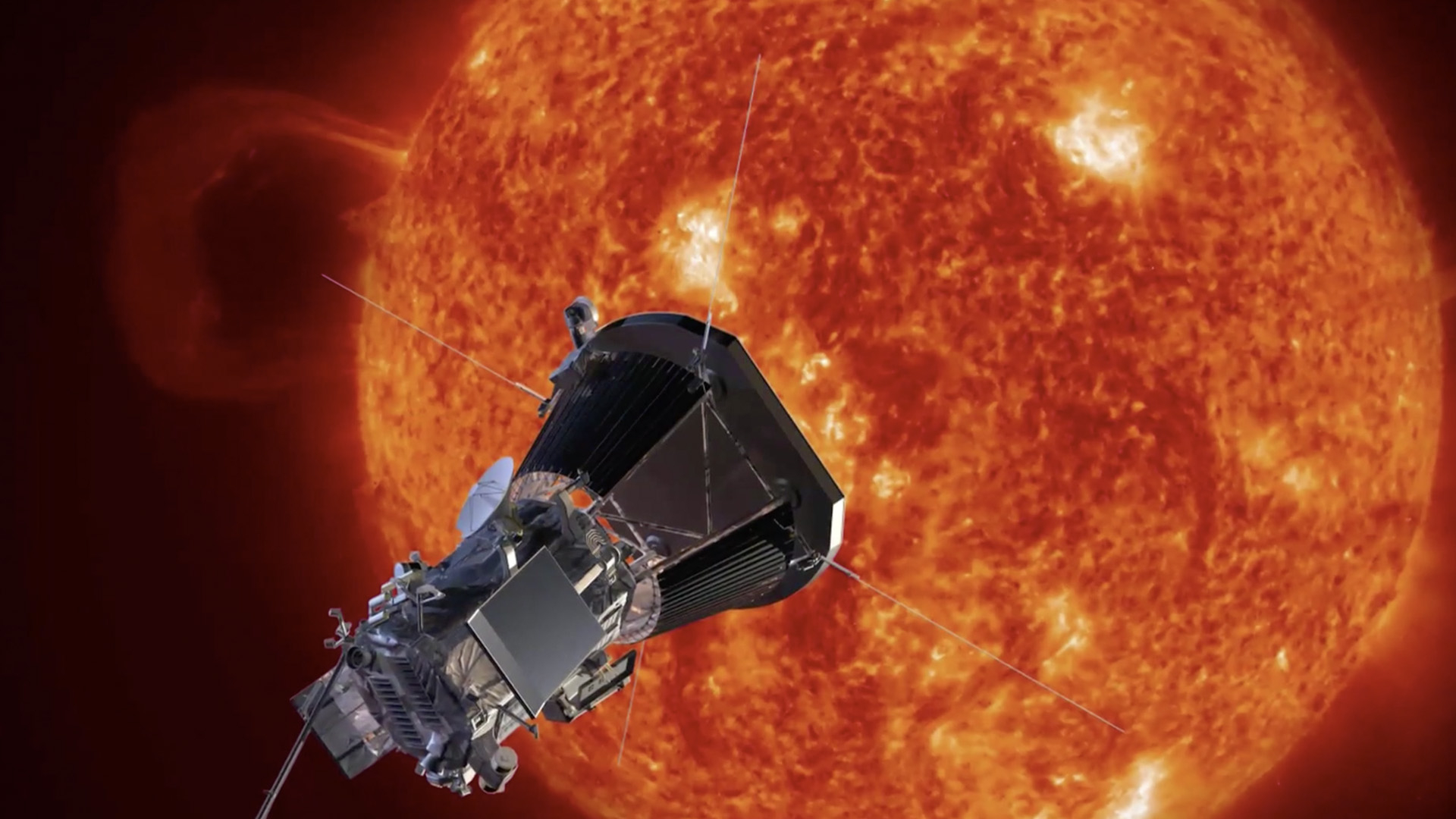
Space
18:47, 08-Nov-2018
NASA's Parker reaches nearest point to Sun during first solar encounter
Updated
17:45, 11-Nov-2018
CGTN
00:47

The US space agency NASA announced on Wednesday that its Parker Solar Probe has reached the nearest point to the Sun during its first solar encounter.
Parker Solar Probe is alive and well after skimming by the Sun at just 24 million kilometers from the star's surface, according to an online statement of NASA.
"We have realized humanity's first close visit to our star, which will have implications not just here on the Earth, but for a deeper understanding of our universe," said Thomas Zurbuchen, associate administrator of NASA's Science Mission Directorate in Washington.
Hailed as the "culmination of six decades of scientific progress," Parker is operating well with all instruments running and collecting science data, according to NASA.
Parker's heat shield is made of a 4.5-inch (11.43-cm) thick carbon composite foam material between two carbon fiber face sheets.
The shield could keep the internal temperature generally at mid-80 degrees Fahrenheit (26.6 degrees Celsius), no matter how high the temperature rises on its outside surface.
Parker also set a new record for spacecraft speed, as its speed reached 343,112 kilometers per hour on Monday at perihelion.
The spacecraft is expected to break its own records repeatedly as its orbit draws closer to the Sun and the spacecraft travels faster at perihelion.
Parker will end its first solar encounter on Sunday and send the collected science data to the Earth afterward.
The mission set Parker's final close approach to the Sun at 6.16 million kilometers from the star's surface, which will be in 2024 if everything goes successfully.
Source(s): Xinhua News Agency

SITEMAP
Copyright © 2018 CGTN. Beijing ICP prepared NO.16065310-3
Copyright © 2018 CGTN. Beijing ICP prepared NO.16065310-3